The ongoing research efforts of the OU Astrophysics & Cosmology group span a wide range of interests, including supernovae, cosmology, extragalactic astronomy, extrasolar planets and circumstellar disks, nucleosynthesis, and observational astronomy.
Computational physics studies on our 112 node Xserve cluster, at OU’s OSCER super computer, at Argonne National Laboratory, at the National Energy Research Supercomputer Center (NERSC) in Berkeley are also ongoing in the areas of supernovae, cosmology, Galactic chemical evolution, active galactic nuclei, and nucleosynthesis.
Astronomy continues to be an exciting field with new ideas and new facilities emerging in the coming decade. We welcome the chance to work with motivated and qualified students.
Our group is among the top few internationally in supernova research. Eddie Baron and Mukremin Kilic are interested in the systematics of how supernovae explode and what kinds of stars lead to different supernovae.
Baron studies the spectra of the expanding supernova atmosphere to determine physical conditions and chemical abundances in the ejecta.
Kilic observes compact binary star systems that may lead to supernovae explosions. Some of these binary systems are among the strongest gravitational wave sources known.
Xinyu Dai studies the populations of gamma-ray bursts and their jet breaks. We have set up a “supernova spectrum repository” - a website at which any astronomer can view all of the supernova spectra that we gather from observers. This makes us the “headquarters” of supernova spectra.
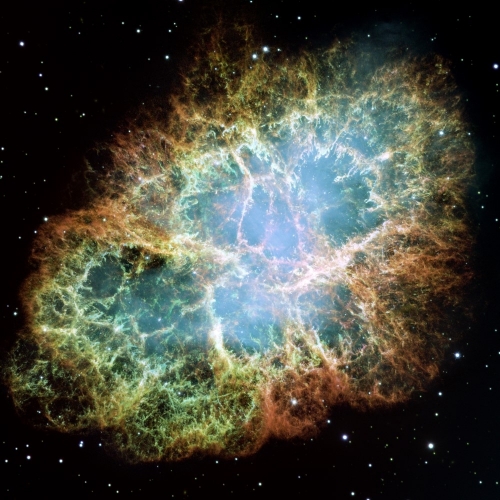
Pictured Above: SN 1054 remnant (Crab Nebula). Supernovae are the explosions of dying stars. But in their death they give clues to the size and fate of the universe. Source: hubblesite.org.
Cosmological research in our group is anchored in observational data and aims at gaining a deep understanding of our universe.
Xinyu Dai uses galaxy clusters to study the distribution of dark matter, the baryon fraction in clusters, and dark energy. Eddie Baron studies the use of supernovae as distance indicators to remote galaxies to determine the age, size and fate of the universe. Baron also studies the systematic uncertainties of using supernovae as cosmological probes.
Pictured: The Hubble Ultra-Deep Field. This image focuses on a very small region of space and features an estimate of around 10,000 galaxies, with some having formed shortly after the Big Bang. Source: hubblesite.org.
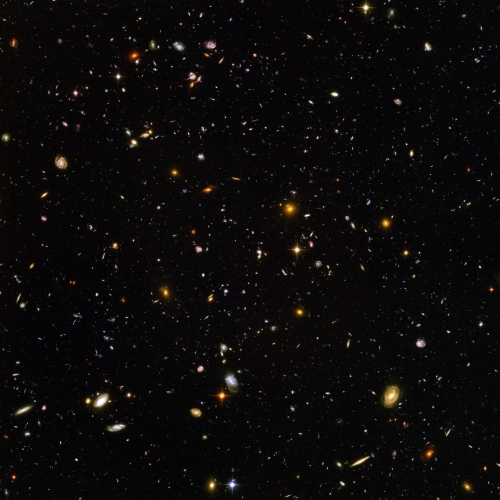
Extragalactic astronomy focuses on the chemical and dynamical evolution on a vast scale.
Xinyu Dai and Karen Leighly study Active Galactic Nuclei. The ultimate power source for Active Galactic Nuclei is thought to be accretion onto a supermassive blackhole. Their extensive program involves observations in the X-ray, optical, and infrared, and also theoretical modeling.
Leighly studies the fundamental properties (covering fractions and column densities) of quasar outflows.
Dai uses gravitational lensing to map the quasar accretion disk structure.
Richard Henry studies the distribution of chemical elements in spiral galaxies like the Milky Way in order to determine the origin and evolution of these objects.
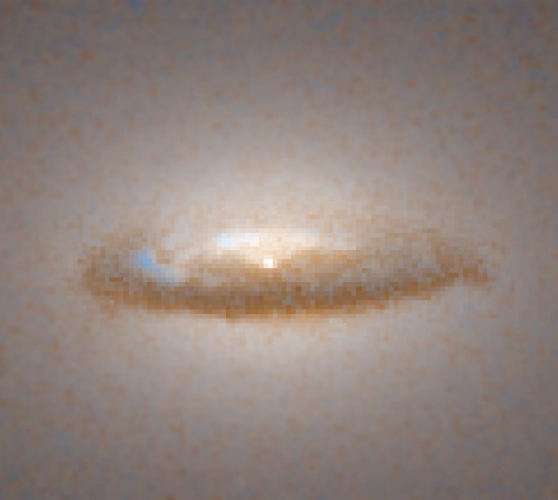
Pictured Above: Dust disk around a black hole in Galaxy NGC 7052. Source: hubblesite.org.
Nathan Kaib studies the formation and evolution of planetary systems, particularly those of both our Sun and other stars. For extrasolar systems in particular, he is interested in how the presence of a binary stellar companion can affect this formation and evolution.
Mukremin Kilic studies the chemical composition of Earth-like planets around evolved stars by observing debris disks, the remnants of such planets.
Nucleosynthesis occurs throughout a star’s life as well as in its death. It is the key to understanding stellar evolution. When stars in the 1-8 solar mass range reach the end of their evolution, they shed outer portions of their atmospheres. The dying star left behind shrinks and gets hotter, and UV light from it causes the outer ring of gas to glow. This “planetary nebula” makes it relatively easy to study the chemical makeup of the gas.
Richard Henry studies the chemical abundances of a variety of emission line objects with the goal of understanding stellar production rates and subsequent cosmic accumulation of elements such as C, N, O, Ne, S, and Ar.
Mukremin Kilic studies the chemical composition of Earth-like planets around evolved stars by observing the remnants of such planets, debris disks. Kilic uses white dwarf cosmochronology to measure the ages of the oldest stars in the Galactic disk and halo and to set limits on the age of the universe.
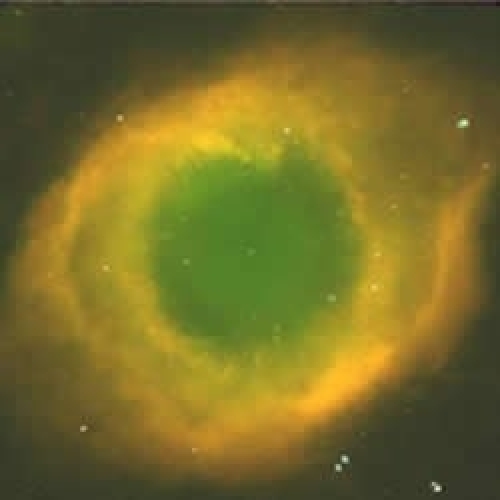
Pictured Above: An image of NGC 7293, the Helix Nebula. Source: Reginald Dufour of Rice University, using a CCD camera.
Observational astronomy is the solid foundation that supports all of our research. Our astronomers use ground- and space- based observatories to study supernovae, supernovae progenitors and remnants, Active Galactic Nuclei, galaxy clusters, gravitational wave sources, extrasolar planets, and debris disks. Our group has recently been awarded observing time on the ground-based MDM 2.4m, NASA IRTF 3m, APO 3.5m, KPNO 4m, Hale 5m, MMT 6.5m, Gemini 8m, Subaru 8.2m, Keck 10m, GTC 10.4m, LBT 12m telescopes and the space-based Hubble Space Telescope, Spitzer Space Telescope, XMM-Newton, and the Chandra X-ray Observatory.
We use our 16-inch campus telescope for student training and weekly public star parties. Our graduate students host these star parties, as well as a weekly journal club.
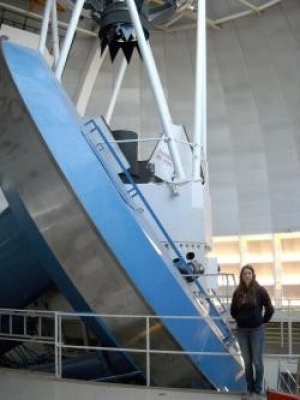
Pictured Above: Dr. Sara Barber during her time as a graduate student, on an observing run at the Kitt Peak National Observatory 4m Telescope near Tucson, AZ.